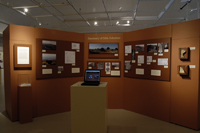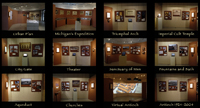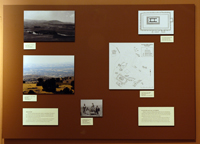
Duderstadt Gallery: Section 7
- Sanctuary of Men Askaenos
The sanctuary dedicated to Mên Askaênos, the Anatolian moon god, is one of the best-documented sources of evidence for the worship of Mên in the ancient world. The origins of the sanctuary may date back as far as the 3rd century BC, although it is not certain whether any of the remains of buildings are from this early period. The temple of Mên may have been built in the 2nd century BC.
The sanctuary is located 3.5 kilometers due southeast of the city of Pisidian Antioch on the high hill of Kara Kuyu (Black Well). Worshippers ascended by a path, the so-called Sacred Way, which wound up the steep slope to the hallowed site. There they not only gave offerings to Mên but also attended and participated in banquets, musical competitions, and athletic contests. These events required a variety of buildings, such as a small theater, or odeum (a building for musical performances), dining halls, sleeping accommodations, and meeting and storage rooms.
During the 2nd and 3rd centuries AD, the sanctuary saw a resurgence in cult activity, attested by inscriptions and coinage from this period. By the 4th century, however, Christianity had become the primary religion at Antioch, and at the end of that century stones from the Temple of Mên were used to build a Byzantine church on the site.



